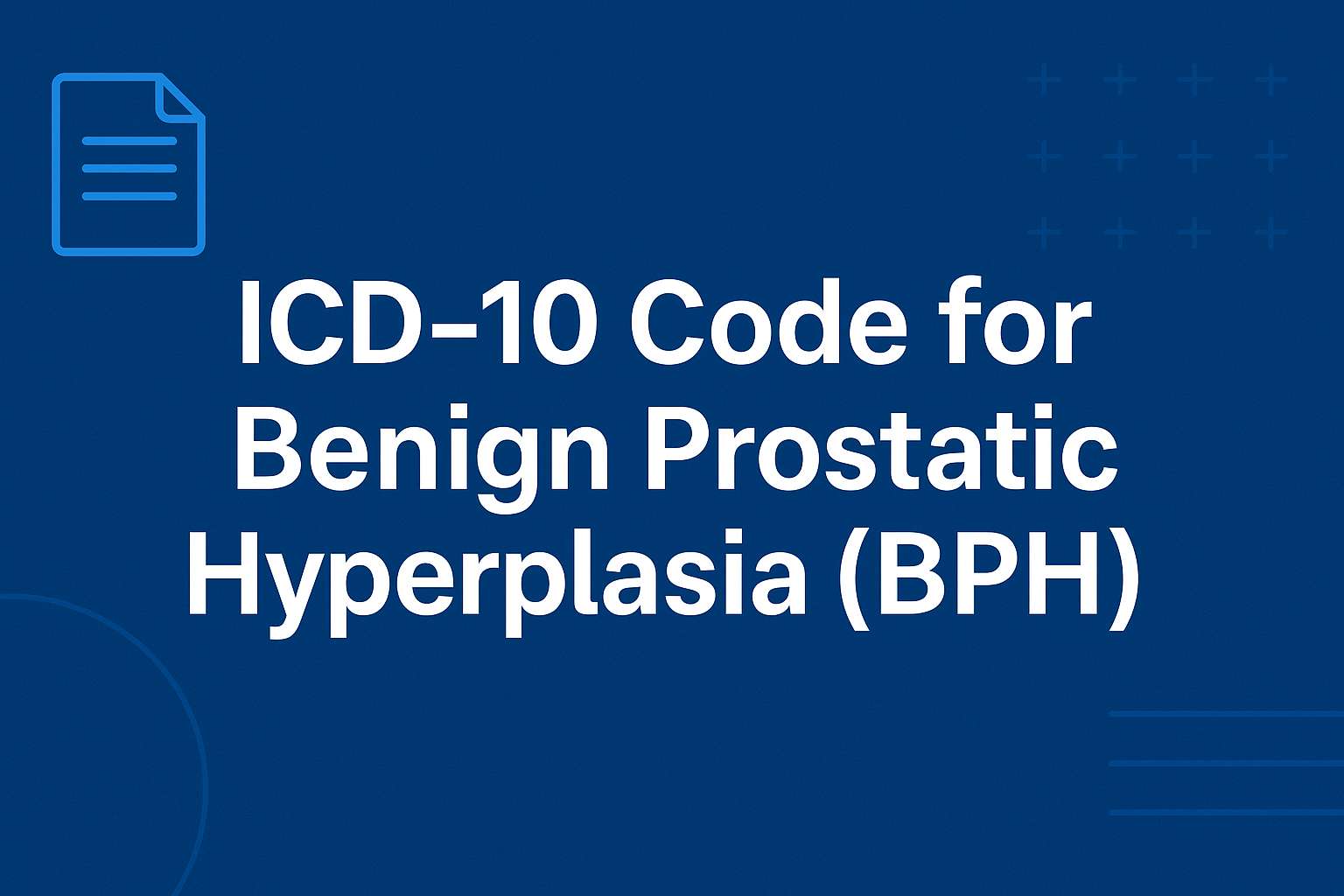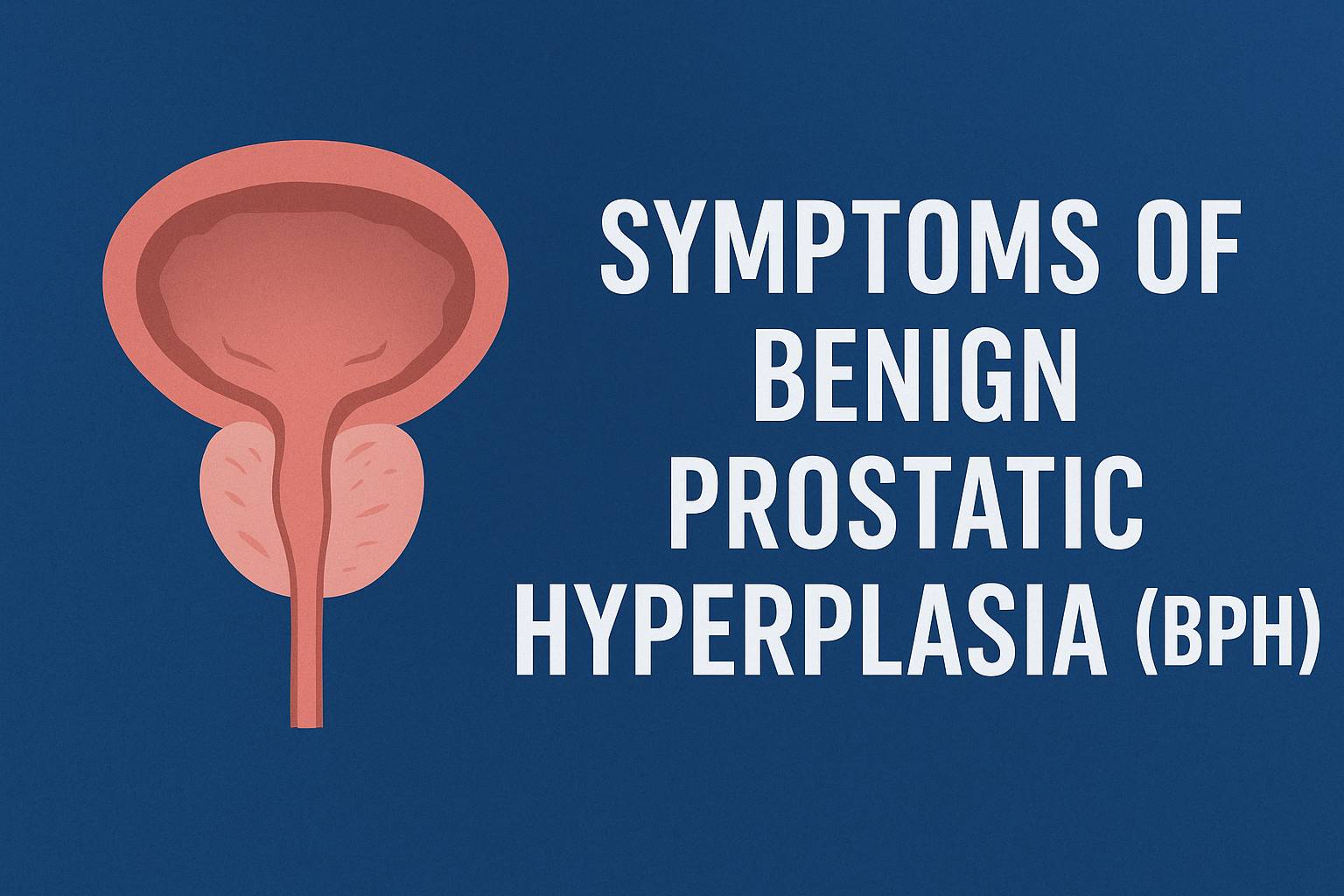ICD-10 Code for Benign Prostatic Hyperplasia (BPH)
“In my clinical practice, I often see men who experience urinary symptoms caused by benign prostatic hyperplasia (BPH). Many patients are surprised when we discuss ICD-10 codes, but accurate coding — such as N40.0 or N40.1 — is essential for proper diagnosis, medical billing, and insurance coverage. In this article, I will explain how BPH is classified in ICD-10, why coding matters for both patients and healthcare providers, and how these codes are applied in everyday practice.”
Benign prostatic hyperplasia (BPH) is one of the most common urological conditions in men over the age of 50. Accurate use of ICD-10 codes ensures proper diagnosis, medical billing, and insurance coverage. This guide explains the main codes for BPH, their subcategories, and how they are applied in clinical practice.
Understanding Benign Prostatic Hyperplasia
Benign prostatic hyperplasia (BPH) is a non-cancerous enlargement of the prostate gland that commonly affects aging men. To understand how ICD-10 coding applies to BPH, it is important to first know what the condition is and why accurate classification plays a crucial role in urology.
What is BPH?
BPH occurs when the prostate gland gradually increases in size, pressing against the urethra and causing urinary difficulties. Symptoms often include frequent urination, weak stream, or the feeling of incomplete bladder emptying. While BPH is not cancer, its impact on quality of life can be significant.
In my clinical practice, many patients arrive worried that urinary symptoms mean prostate cancer. Most cases turn out to be BPH, which is a benign condition. Clear diagnosis and documentation allow patients to understand their condition and reduce unnecessary anxiety.
Why accurate coding matters in urology
ICD-10 coding provides a standardized way to record medical conditions, including BPH. Using the correct code helps physicians communicate clearly with insurance providers, hospitals, and other healthcare professionals. For patients, this ensures that treatment is properly recognized and covered.
I often explain to patients that accurate coding is more than paperwork — it directly affects their access to care. If BPH is coded incorrectly, insurance claims may be delayed or rejected. Correct classification builds a bridge between diagnosis, treatment, and financial coverage.
ICD-10 Classification for BPH
ICD-10 provides specific categories for benign prostatic hyperplasia, making it easier for doctors, insurers, and researchers to track and document the condition. Knowing the difference between codes helps avoid errors and ensures that treatment details are recorded accurately.
ICD-10 codes for BPH: N40.0, N40.1, and more
The main category for BPH is N40. Within this group, doctors use more detailed codes depending on the clinical presentation. N40.0 refers to BPH without lower urinary tract symptoms, while N40.1 covers BPH with such symptoms. These codes help distinguish between patients with mild enlargement and those who experience significant urinary problems.
In practice, I use N40.0 when a patient shows prostate enlargement on exam or imaging but has no complaints. When urinary symptoms like weak flow, urgency, or nocturia are present, N40.1 is the correct code. This distinction helps guide both treatment decisions and insurance coverage.
ICD-10 subcategories: with and without urinary obstruction
ICD-10 coding goes further by differentiating whether BPH causes obstruction. Patients with obstruction often report difficulty starting urination, dribbling, or retention. Coding this correctly highlights the severity of the condition.
When I see a patient with significant obstruction, I always document it under the appropriate subcategory. This ensures the insurance company understands the need for treatment, whether it is medication or surgical intervention. Clear coding mirrors the clinical picture and prevents delays in care.
Related prostate conditions and corresponding codes
Not every prostate issue falls under BPH. For example, N41 covers inflammatory conditions such as prostatitis, while N42 refers to other non-inflammatory disorders. Malignant changes are classified separately under C61 for prostate cancer.
Accurate coding means recognizing when symptoms come from BPH and when they point to another diagnosis. In my experience, separating these codes avoids confusion and helps patients receive the correct management plan.
How ICD-10 Coding is Used in Practice
ICD-10 codes are not just technical labels. They play a direct role in how doctors record conditions, how hospitals get reimbursed, and how public health data is collected. Correct coding for BPH ensures that patients receive proper care and coverage at every stage of the medical process.
Medical billing and insurance claims
Insurance companies rely on ICD-10 codes to decide which treatments qualify for coverage. When a physician documents BPH as N40.0 or N40.1, the insurer knows whether medication, monitoring, or surgical intervention is justified.
In my work, I have seen claims denied simply because the wrong code was used. Once corrected to the accurate ICD-10 category, coverage was approved without issue. This shows how critical precise coding is for both patients and providers.
Clinical documentation for diagnosis
Doctors use ICD-10 codes to standardize how they describe conditions in medical records. For BPH, coding reflects not just the presence of prostate enlargement but also the severity of urinary symptoms. This creates a clear picture that other specialists can follow.
When I share a patient’s record with a colleague, proper ICD-10 documentation avoids misunderstandings. It ensures that treatment decisions are based on a consistent and transparent diagnosis.
Research and public health reporting
Beyond clinical care, ICD-10 codes supply data for research and health statistics. Tracking BPH cases through coding helps identify trends in aging populations and guides resource allocation in healthcare systems.
Public health agencies use this information to plan screening programs and evaluate the burden of prostate conditions. Accurate coding transforms individual diagnoses into valuable data that improves care at a population level.
ICD-10 vs. Other Coding Systems
Medical coding evolves over time, and BPH has been classified differently across coding systems. Understanding these changes helps both physicians and patients see how diagnostic accuracy has improved.
ICD-9 comparison
In ICD-9, benign prostatic hyperplasia was listed under the code 600, with subcategories such as 600.0 for BPH without urinary obstruction and 600.1 for BPH with obstruction. While functional, this system lacked the detail and global standardization later achieved with ICD-10.
When ICD-10 replaced ICD-9, the shift brought more precise categories, such as N40.0 and N40.1. In my practice, this made documentation clearer, especially when explaining to patients why their diagnosis required a specific treatment or insurance justification.
Transition to ICD-11 and what to expect
ICD-11, introduced by the World Health Organization, builds on ICD-10 with even more detail and digital compatibility. BPH remains classified under the broader category of prostate disorders, but coding now integrates with electronic health systems more smoothly.
For patients, the main change is better accuracy and consistency across countries. For physicians, ICD-11 simplifies data exchange and reduces ambiguity in classification. As healthcare providers adopt ICD-11, we can expect coding for BPH to become even more transparent and patient-centered.
FAQ About BPH ICD-10 Codes
The primary ICD-10 code for BPH is N40. Subcodes like N40.0 and N40.1 specify whether lower urinary tract symptoms are present.
N40.0 describes BPH without lower urinary tract symptoms. It applies when enlargement is confirmed but the patient has no significant urinary complaints.
N40.1 indicates BPH with lower urinary tract symptoms such as weak stream, urgency, or nocturia.
Correct ICD-10 coding ensures insurers recognize BPH and approve coverage for necessary treatments, whether medication, procedures, or surgery.
Prostatitis is coded as N41, other non-inflammatory prostate disorders as N42, and prostate cancer as C61.
ICD-9 used code 600 for BPH. ICD-10 replaced this with N40 subcodes, adding clarity and improving international consistency.
ICD-11 keeps BPH under prostate disorders but improves digital integration and global consistency in medical records.
“As a physician, I know that men often feel concerned when urinary symptoms appear and the term ‘BPH’ is introduced. Most cases are manageable, but proper ICD-10 coding ensures accurate diagnosis, effective treatment planning, and smooth insurance coverage. My advice is clear: if urinary symptoms persist or worsen, seek medical evaluation. Early consultation not only improves treatment outcomes but also provides peace of mind.”













